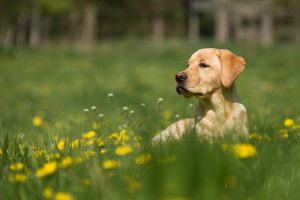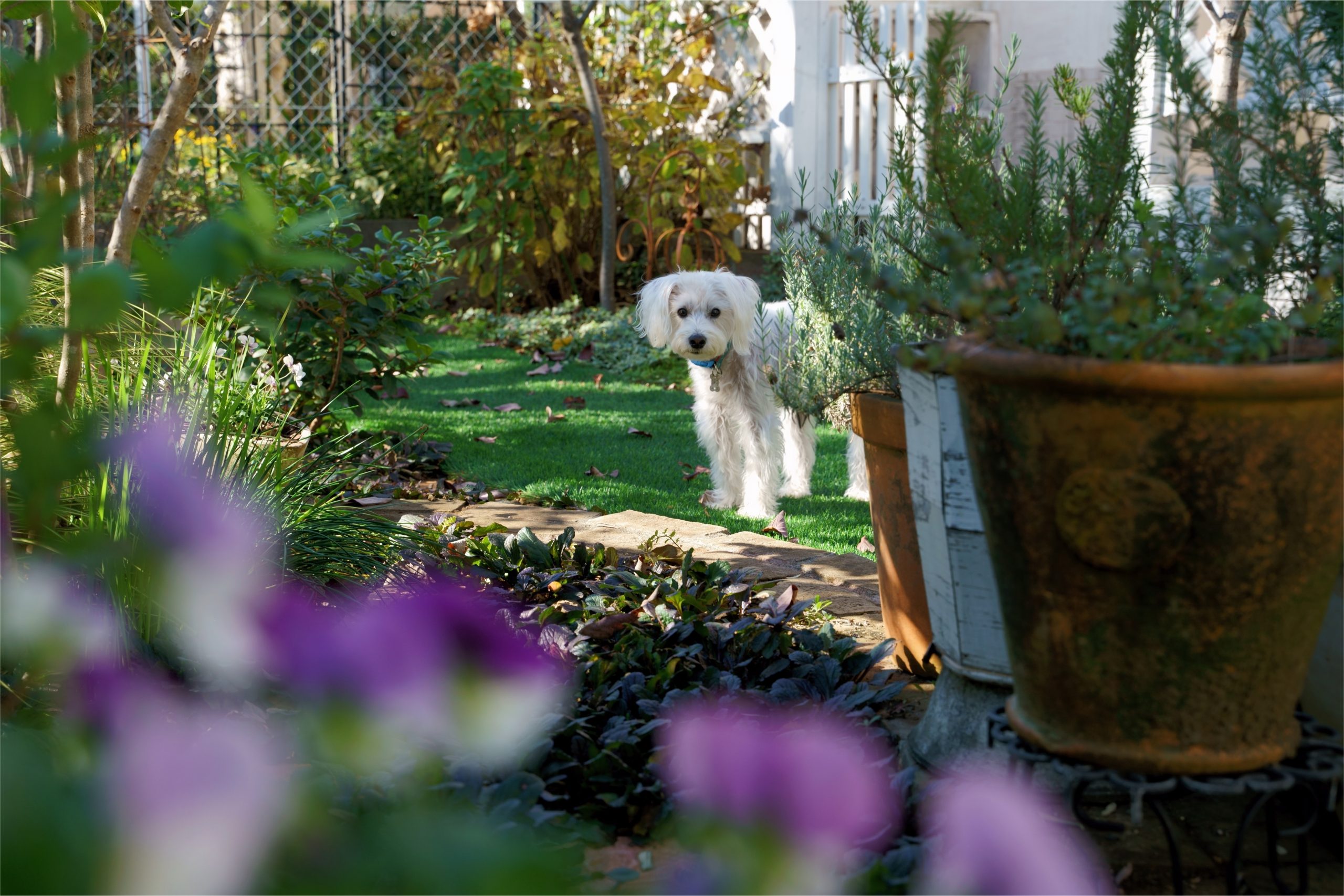Last Updated on April 10, 2024 by Real Men Sow
We love our dogs, don’t we? – Those cute paws and eyes! If you got active dogs in your garden, you know how frustrating could it be to have your favorite pet digging up your plants or marking their territory on your lawn. Dogs can find a garden to be a stimulating and beautiful place and the best way to find balance is to make your garden dog-friendly.
There are also hazards in gardens for some dogs. Some plants can be toxic to our pets, and there are other dangers such as sharp objects or harmful chemicals.
You can do many things to make sure you live in harmony and peace with your four-legged friend. These include planting non-toxic plants, creating dog areas, and keeping the garden safe.

What are the Best Ways to Keep A Dog-Friendly Garden?
Create a Stimulating Dog-friendly Garden
Your dog will be stimulated if you create different paths through your garden. Different textures can stimulate underfoot and plants like salix and ornamental flowers and grasses that will dance and sway to entertain your dog.
Growing Robust Plants
Boisterous dogs can cause damage to young plants or fragile stems by digging up or running through them. Choose established perennials such as nepeta and astilbe, and avoid Pelargonium species which can be toxic to dogs. It’s a good idea to grow a strong backbone of shrubs like viburnum and shrub roses.
Dog-Friendly Garden Means There is No Place for Toxic Plants
Dogs can be poisoned by many garden plants. These include the following:
- Chrysanthemums
- Aconite
- buttercup
- Delphiniums
- Daphne
- Foxgloves
- Hydrangeas
- Daffodil
- Oak
- Tomato
- Wheat
- Wisteria
- Yew
You should immediately take your dog to the veterinarian if you see any unusual symptoms or believe your dog has eaten a part of a plant.
Add Protection for Your Plants and Lawns
You should create a play area or dig area with sand and bark for dogs. You can create pathways through your borders to stop dogs from running around them. Or, create clear boundaries like a low-growing hedge or box hedge. Raised beds are also an option.
Tips To Change for Your Dog-Friendly Garden
Grow Dog-friendly Plants
A beautiful garden can be maintained even if your dog is present and many plants are safe for dogs. These include the following:
- Snapdragons (Michaelmas daisies)
- Camellias
- Roses
- Sunflowers
- Centaurea (cornflower)
- Impatiens
- Calendula
Your Garden Should be Secured
Dogs can dig through fences or get out of holes in fences. Make sure you have secure borders at the base. If you have a medium-sized dog, make sure that your fences are at 6 feet high. Gates should be kept secure.
Your Shed Should be Kept Secured
Sheds may contain dangerous chemicals or sharp tools. Make sure that they are securely closed at all costs.
Go Organic!
Avoid chemicals like non-organic snail pellets. These could cause harm if your dog eats one. Learn how to handle snails and slugs organically. Don’t add any chemicals to ponds or water features, as dogs may be attracted to them. If your lawn is struggling with weeds, use pet-friendly weedkillers.
Don’t use Cocoa Bean Shell Mulch
This by-product from the chocolate industry can be dangerous if it is eaten by your dog. However, the chocolatey scent is very tempting. Use an alternative mulch such as bark chippings.
Keep Your Compost Bin Secured
Food scraps in compost bins may be appealing to dogs and could cause harm. Certain foods like avocados, grapes and raisins can cause harm, so ensure that your bin is locked.
Don’t Let Your Dog Pee on the Lawn
Yellow patches can be created by your dog peeing on the grass. You can train your dog to not wee on the lawn or hose it down afterward.
Dog urine can scorch grass and cause circular brown spots to form. The nitrogen in dog urine is very high. Although nitrogen can have a fertilising effect on lawn growth, too much can cause dead patches.


